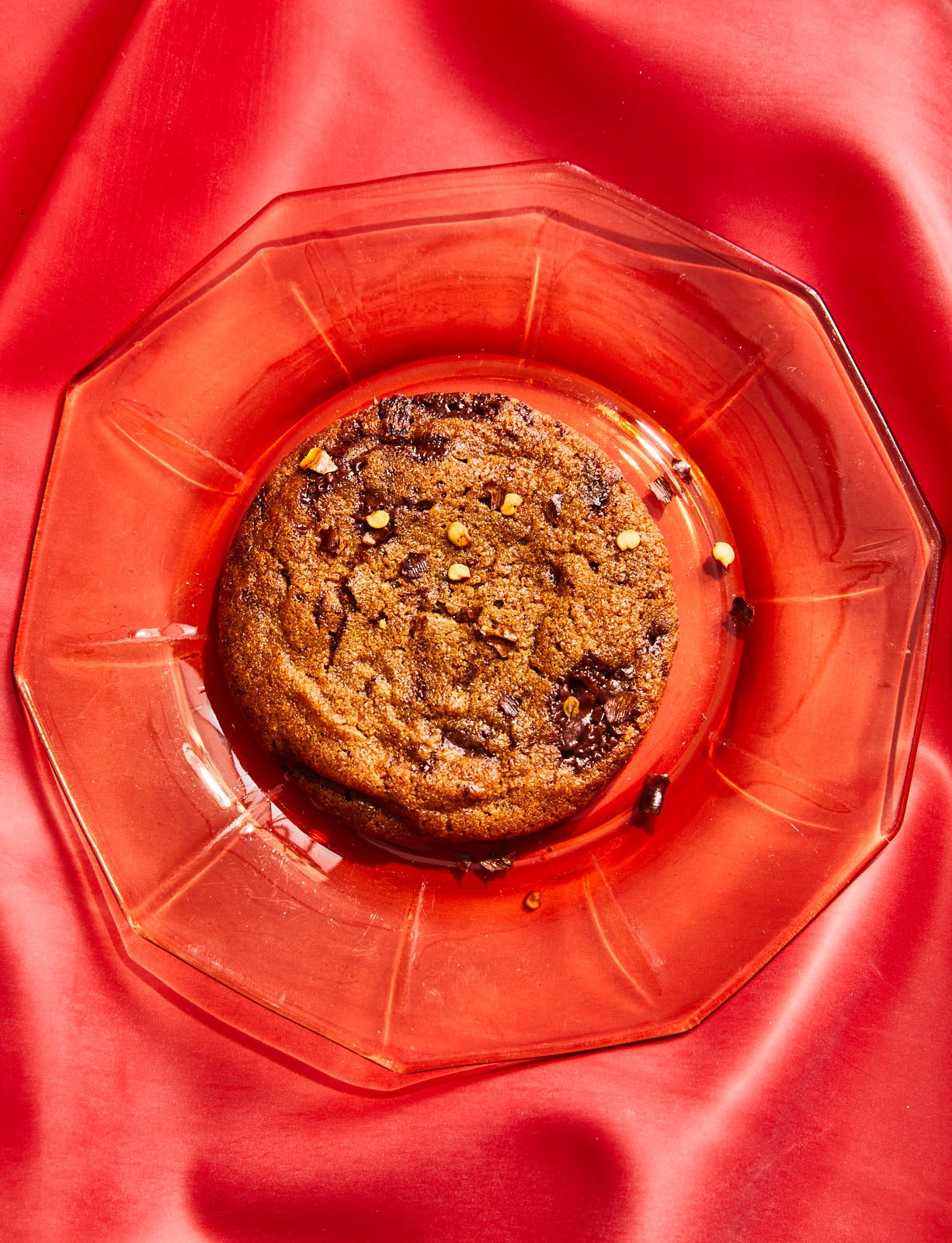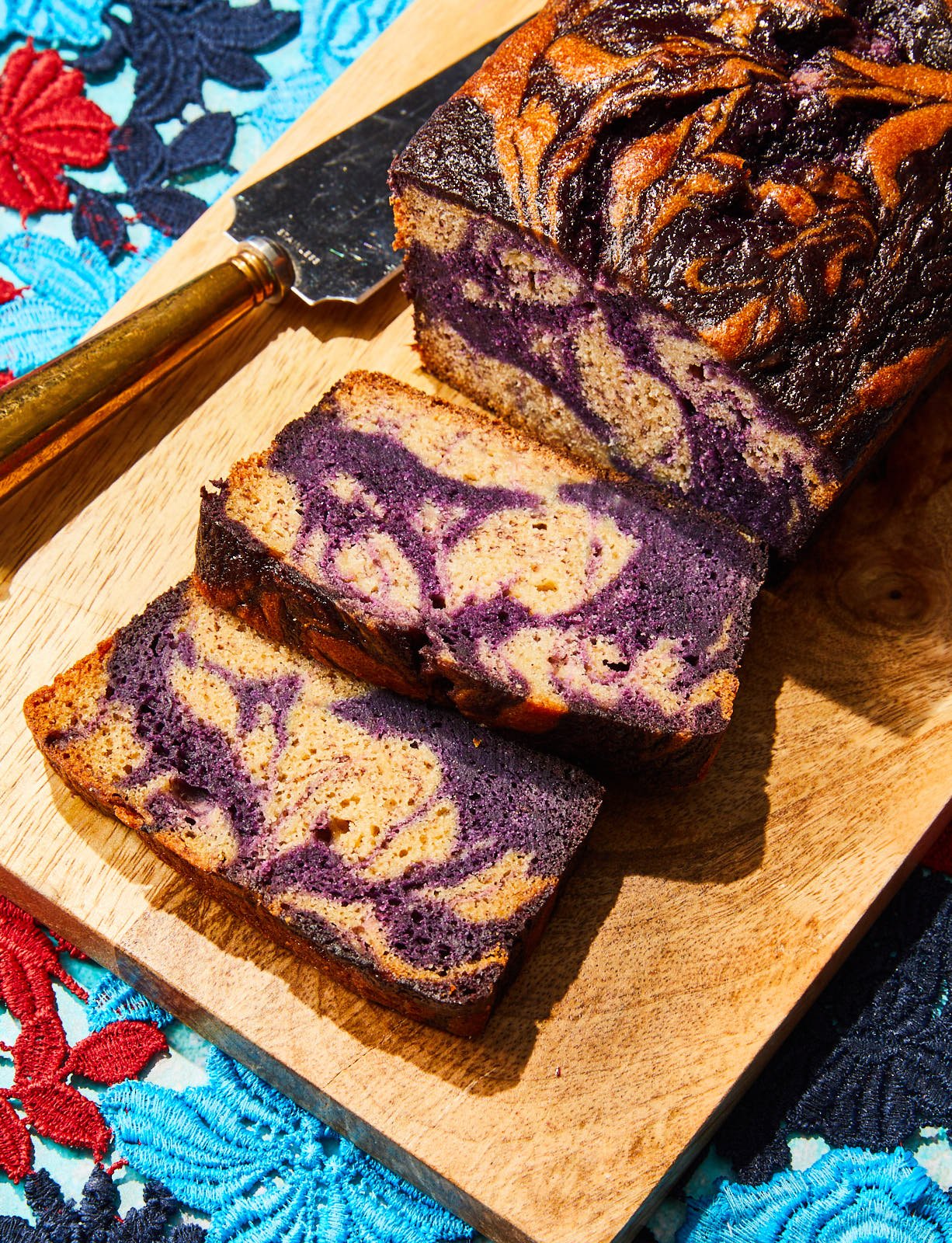Pandan coconut cream pie
Coconut and pandan might as well be soulmates. They belong together. It’s a partnership revered across Southeast Asia and one I re-create again and again throughout this book (Raspberry Buko Pandan Cake, page 24, and Southeast Tiramisu, page 142, for example). The long blade-shaped leaves of pandan, known as “vanilla of the East,” wield an elusive flavor that’s tropical, grassy, nutty, and sweet. When allied with coconut, so creamy and buttery, it creates a nearly perfect match. Here their exquisite flavors sing together with-out the distraction of anything else, save for a splash of lime juice to break through the richness. This pie is very coconutty and very pan-dan-y. It’s sophisticated yet simple. And I mean that as a compliment.
MAKES ONE 23 CM PIE
Pastry Crust
1⅓ cups plus 1 tablespoon (174g) all-purpose flour, plus extra for dusting
¼ teaspoon kosher salt
6 tablespoons (85g) cold unsalted butter, cubed
4 tablespoons (60g) ice water
Filling
8 frozen pandan leaves (about 65g), cut into small pieces (see Note)
¼ cup (60g) water
¼ cup (33g) cornflour
4 large egg yolks, at room temperature
400 ml can unsweetened coconut milk
½ cup (100g) caster sugar
¼ tsp kosher salt
1 cup (50g) unsweetened shredded coconut
5 tsp (25g) fresh lime juice
1 tbsp (14g) unsalted butter
¼ tsp coconut extract
Meringue Topping
2 large egg whites, at room temperature
¼ cup (50g) granulated sugar
⅛ tsp cream of tartar
pinch of kosher salt
Special Equipment
kitchen torch
For the pastry crust: In a food processor, add the flour, salt, and butter and pulse until the butter is broken up into small bits. Add the water and pulse until the mixture looks like crumbled dough.
Transfer to an unfloured work surface. Gather and shape into a flat disc. Lightly dust the work surface with flour and roll out the dough into a 30cm round.
Transfer to a 23cm pie plate. There should be some overhanging dough. Tuck this excess under itself, all the way around, and pinch and shape into an evenly raised border, using the flat lip of the pie plate as a base. Flute or crimp the crust. Prick the dough all over with a fork. Refrigerate for at least 30 minutes and up to overnight.
Preheat the oven to 180°C. Set the pie plate on a sheet pan and line the pastry with foil so it covers the dough entirely. Fill with dried beans or pie weights.
Bake until the dough starts to look dry with a matte finish, 35 to 40 minutes. Remove the foil and beans and continue to bake (on the sheet pan) until the crust is light golden all over, 20 to 25 minutes.
Note: After you remove the foil and beans and return the pastry to the oven, it should not balloon in the center. If it does, put the foil and beans back and bake for another 5 to 10 minutes before continuing.
Transfer the pie plate to a wire rack and let cool completely.
For the filling: In a small food processor, add the pandan leaves and water and puree. Scrape down the sides as needed and resist the urge to add more water. It won’t look like it’s blending well, but you just want to get the pandan really pulverized.
Place a fine-mesh sieve over a liquid measuring cup and strain the mixture, pressing with a rubber spatula to extract the green liquid. You should have ¼ cup (60g) pandan juice (if you’re short for whatever reason, just add a little water).
In a medium bowl, whisk together the pandan juice and cornstarch. Whisk in the egg yolks and set beside the stovetop.
In a large saucepan, whisk together the coconut milk, sugar, and salt. Heat over medium heat, whisking occasionally, until warm and steaming, about 5 minutes. Turn off the heat.
Gradually whisk the warm coconut mixture into the pandan mixture. Pour it back into the saucepan and cook over medium heat, whisking constantly, until thick like pudding, about 2 minutes.
Remove from the heat and whisk in the shredded coconut, lime juice, butter, and coconut extract.
Scrape the filling into the cooled crust and spread into an even layer. Cover with plastic wrap so it touches the surface of the pudding (this will prevent a skin from forming). Refrigerate until chilled and set, at least 4 hours, but overnight is best.
For the meringue topping: Bring a pot of water to a simmer (your stand mixer bowl should be able to sit over the pot without the bottom of the bowl touching the water). Fit the stand mixer with the whisk.
In the stand mixer bowl, whisk together the egg whites, sugar, cream of tartar, and salt. Set the bowl over the pot of simmering water and cook, whisking constantly, until the sugar is dissolved and an instant-read thermometer registers 160°F (71°C), about 4 minutes.
Fasten the bowl into the stand mixer and beat on high speed until glossy stiff peaks form (peaks should stand straight up and not curl at the tip), about 2 minutes.
Transfer the meringue to a large pastry bag (see Note) fitted with a medium French star tip (Wilton #6B). Pipe dollops of the meringue around the perimeter of the filling. Repeat two more times so you have three concentric circles of meringue and a small bare round of pudding in the center.
Toast the meringue with a kitchen torch. Alternatively, use your oven broiler to toast the meringue (but watch it carefully).
Note: If you’d rather not pipe the meringue, simply spread over the top, swooping and swirling to create whimsical peaks.
Note: In place of frozen pandan leaves, combine the ¼ cup (60g) water with ⅛ teaspoon green pandan paste.
Read our Sugarcane review click here
This is an edited extract from Sugarcane by Arlyn Osborne, published by Hardie Grant Books. 📷 Linda Xiao.




